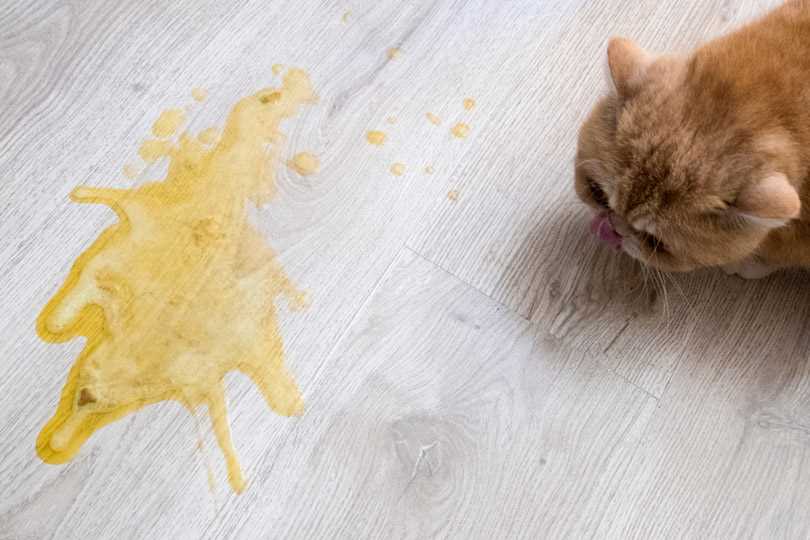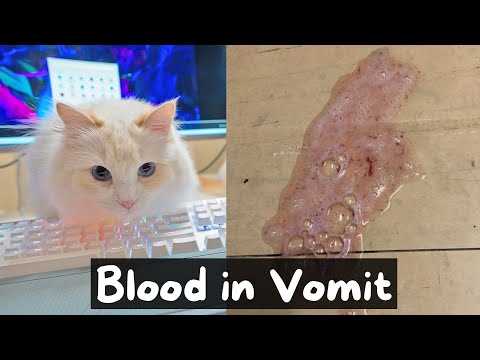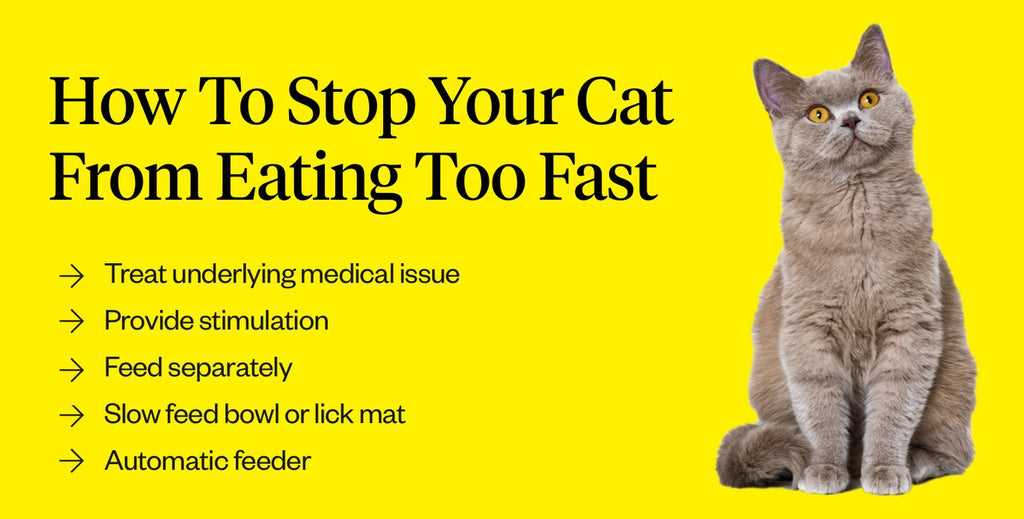



First of all, if you notice that I often bring up my food shortly after dining, it’s crucial to evaluate my eating habits. One common reason for this behavior is that I may be consuming my meals too quickly. Try using a slow feeder bowl to help regulate my eating pace and prevent me from gulping down my kibble.
Another aspect to consider is the type of food I’m given. Some kitties have sensitive stomachs, making certain ingredients hard to digest. It might be beneficial to switch to a sensitive stomach formula or consult a veterinarian about a suitable diet that can ease my tummy issues.
Lastly, keep an eye on my overall health. Frequent vomiting can sometimes indicate underlying health problems. If this behavior persists, a trip to the vet is essential to rule out any serious conditions. Regular check-ups will ensure I stay happy and healthy!
Experiencing Discomfort After Meals
Check for food allergies or intolerances. It’s common for some furry friends to react negatively to specific ingredients. Consider switching to a limited ingredient diet to identify potential triggers.
Feeding Techniques Matter
Adjust the way you serve meals. Offering smaller portions throughout the day instead of one large serving can help. Slow feeders or puzzle bowls can also encourage a more measured eating pace, reducing the chance of regurgitation.
Health Issues to Monitor
Keep an eye on other symptoms. If there’s lethargy, changes in behavior, or weight loss, it might be time for a vet visit. Conditions like hairballs, infections, or digestive disorders could be underlying issues. Regular check-ups are key to ensuring well-being.
Common Causes of Vomiting in Cats
One major reason for regurgitation is the ingestion of food too quickly. Slower feeding can help, so consider using a puzzle feeder or spreading the meal across a larger space. Another issue could be hairballs, especially for long-haired breeds. Regular grooming reduces fur intake during self-cleaning.
Dietary Factors
Allergies or sensitivities to specific ingredients can trigger gastrointestinal upset. It’s wise to monitor any changes in your feline’s diet and consult a vet for hypoallergenic options if necessary. Additionally, spoiled or inappropriate food can cause distress. Always check expiration dates and storage methods to keep meals fresh.
Health Concerns
Underlying medical conditions, such as infections, parasites, or more serious diseases, could be culprits. Regular veterinary check-ups are essential to rule out these issues. If vomiting persists, it’s crucial to seek professional advice promptly.
For those who enjoy outdoor adventures with their pets, equipping them with the best tracking collar for cats ensures safety while exploring. Keeping an eye on their health during activities is equally important.
Identifying Food Sensitivities in Your Cat
Switching to a limited-ingredient diet can help identify specific food sensitivities. Choose high-quality protein sources and avoid common allergens like grains, dairy, and certain meats.
Keep a Food Diary

Documenting meals and any reactions is vital. Note down the ingredients, feeding times, and symptoms observed afterward. This information can assist your veterinarian in pinpointing problematic foods.
Gradual Introduction of New Foods
When trying a new diet, introduce one ingredient at a time. Monitor for adverse reactions over several days before adding anything else. This method ensures that any sensitivity becomes evident without confusion.
How to Recognize Overeating Behavior
Watch for signs indicating a love for food that goes beyond normal consumption. A few key behaviors can help identify this tendency.
Signs of Excessive Eating
- Rapid consumption: Finishing meals in seconds can signal a problem.
- Begging: Constantly seeking food or attention around meal times shows an unhealthy fixation.
- Stealing food: Scavenging from other pets or counters indicates a lack of self-control.
- Weight gain: Noticeable increases in body mass may be a direct result of overeating.
Environmental Triggers
- Food availability: Leaving bowls full can lead to mindless grazing.
- Feeding frequency: Multiple meals throughout the day can encourage overeating.
- Stress factors: Changes in the home, like new pets or visitors, might lead to excessive eating as a coping mechanism.
Monitoring these behaviors can help in adjusting feeding routines, ensuring a healthier lifestyle. Implementing structured meal times and portion control may assist in managing this behavior effectively.
The Role of Hairballs in Feline Vomiting
Hairballs can significantly contribute to the regurgitation issues some felines face. These compacted masses of fur form in the digestive tract when grooming leads to the ingestion of hair. If these hairballs become too large or numerous, they can block the passage of food, resulting in discomfort and subsequent vomiting.
Understanding Hairball Formation
As a Scottish Fold, I’m no stranger to grooming. While it keeps my coat looking fabulous, it also means I swallow hair regularly. Most of the time, my digestive system manages to handle it, but when hair accumulates, it can create a troublesome situation. Regular grooming sessions can reduce the amount of fur I ingest, helping to minimize hairball formation.
Signs of Hairball Problems
Pay attention to specific indicators that may suggest hairball troubles. Frequent attempts to vomit without success, gagging sounds, or even changes in appetite can signal an issue. If I seem to struggle more than usual, it might be time for a vet visit to rule out any blockages or complications caused by hairballs.
Incorporating hairball control diets or supplements can aid in managing this issue. These formulations often contain ingredients that promote healthy digestion and hair elimination. Always consult a veterinarian to find the best approach tailored for your unique needs.
When to Consult a Veterinarian
If you notice frequent regurgitation of food along with other troubling signs, it’s time to seek professional help. Look for behaviors such as lethargy, diarrhea, or a noticeable change in appetite. These symptoms can indicate underlying health issues that require immediate attention.
Keep an eye out for any additional symptoms that may accompany the vomiting. If you observe the following, don’t hesitate to contact a veterinarian:
| Symptom | Action |
|---|---|
| Weight loss | Schedule a vet visit for a complete examination. |
| Blood in vomit | Seek emergency care immediately. |
| Persistent vomiting | Consult a veterinarian within 24 hours. |
| Change in drinking habits | Monitor closely and report to a vet. |
| Abdominal pain | Get a vet consultation urgently. |
Prompt action is key. Regular check-ups can help catch potential problems early, ensuring a healthier and happier life.
Tips for Changing Your Feline’s Diet Safely
Gradually introduce new food over a week. Start by mixing a small amount of the new meal with the current one, gradually increasing the new portion while decreasing the old.
Monitor Portion Sizes
- Use a measuring cup to ensure accurate portions.
- Adjust based on weight and activity level.
- Split daily intake into smaller, more frequent servings.
Choose High-Quality Ingredients

- Opt for brands that list real meat as the first ingredient.
- Avoid fillers like corn and artificial additives.
- Consider options with limited ingredients for sensitive tummies.
Observe for any signs of discomfort or adverse reactions during the transition. If issues arise, return to the previous diet and consult a vet for guidance.
Maintain a consistent feeding schedule. This helps establish routine and can promote better digestion.
Consider adding water or low-sodium broth to dry kibble to enhance palatability and encourage hydration.
If allergies are suspected, try a hypoallergenic formula under veterinary advice. Monitor how your friend reacts to each change.
Maintaining Hydration and Its Importance

Always ensure fresh water is available and encourage regular drinking. Dehydration can exacerbate gastrointestinal issues, leading to increased discomfort and potential vomiting. I find that having multiple water bowls around my territory motivates me to sip more often. Consider using a pet water fountain; the flowing water tends to attract my interest.
Monitor fluid intake daily. If hydration levels seem low, introducing wet food can significantly help. Not only does it add moisture, but it also enhances nutrition. It’s essential to be aware of signs of dehydration, such as dry gums or lethargy, as they can indicate a need for immediate attention.
Hydration Techniques
Experiment with flavoring water using low-sodium broth or tuna juice to make it more enticing. You can also freeze small ice cubes from broth to provide a refreshing treat that encourages drinking. Keep an eye on how much I consume; adjusting my diet based on hydration needs can prevent further health issues.
For a deeper understanding of digestion processes, check out this link: where does protein digestion end.










